Pollinator Highlights at the Wild Gardens of Acadia
Keep your eyes peeled for these hard-working pollinators.
Text and images by Oleander Morrill, 2023 Wild Gardens of Acadia intern
Keep your eyes peeled for these hard-working pollinators.
Text and images by Oleander Morrill, 2023 Wild Gardens of Acadia intern
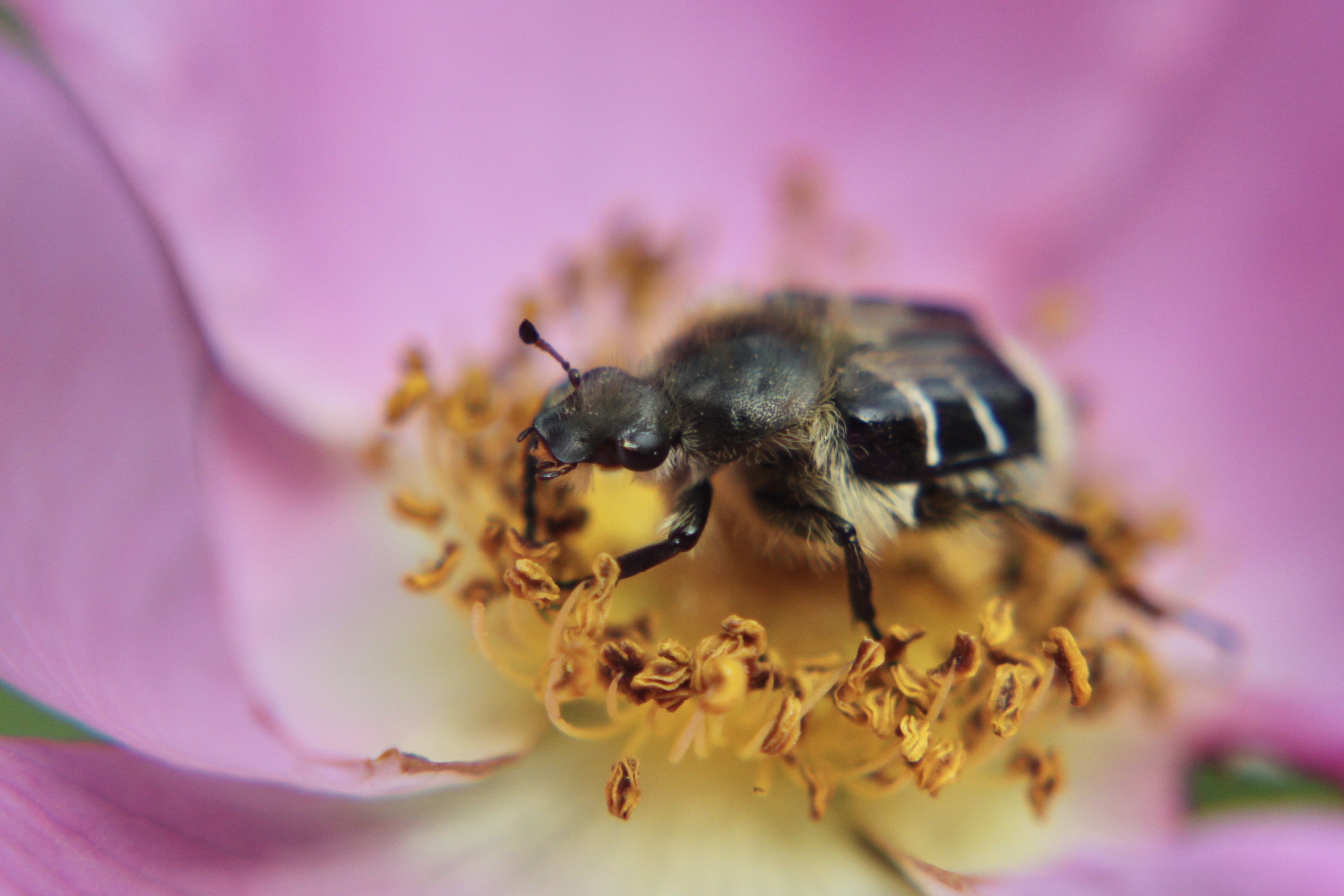
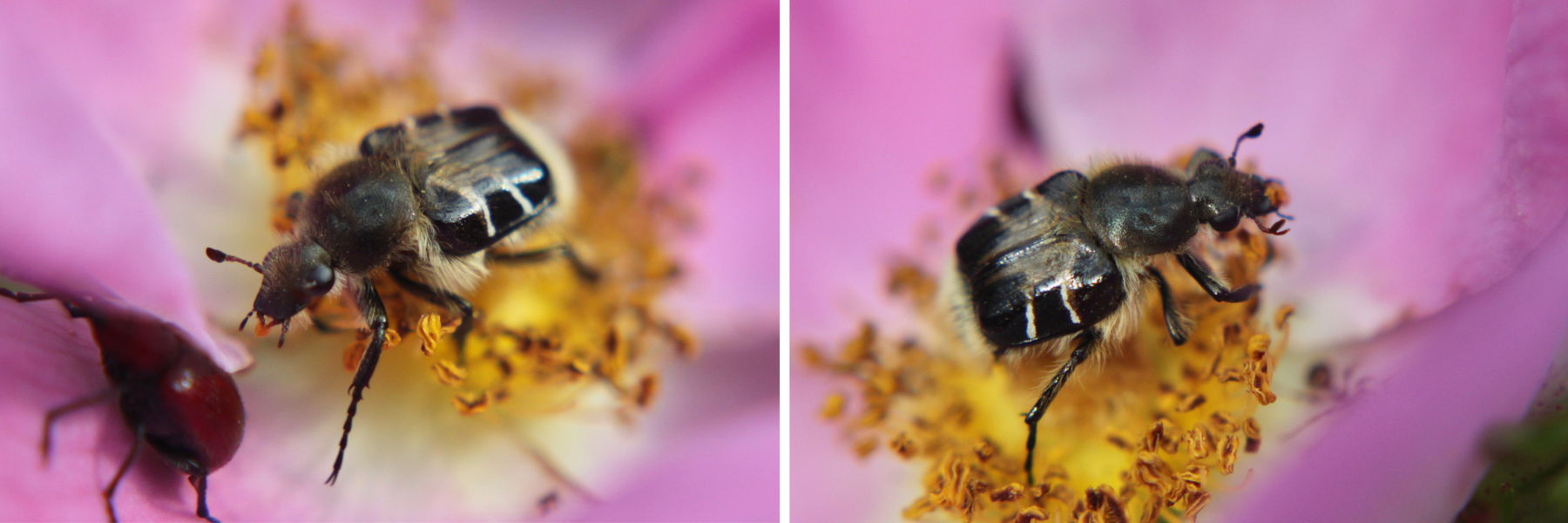
(Photos by Oleander M Photos)
A species of scarab beetle, the bee-mimic beetle is entirely harmless and, despite what you may think from its appearance, cannot sting. This beetle has what is called Batesian mimicry to ward off predators. That is, through evolution, these insects have gained protection by looking like an unpalatable species. Bee-mimic beetles are found throughout much of North America. Other common names include the hairy flower scarab or flower chafer.
Reference: www.inaturalist.org/taxa/232874-Trichiotinus-assimilis
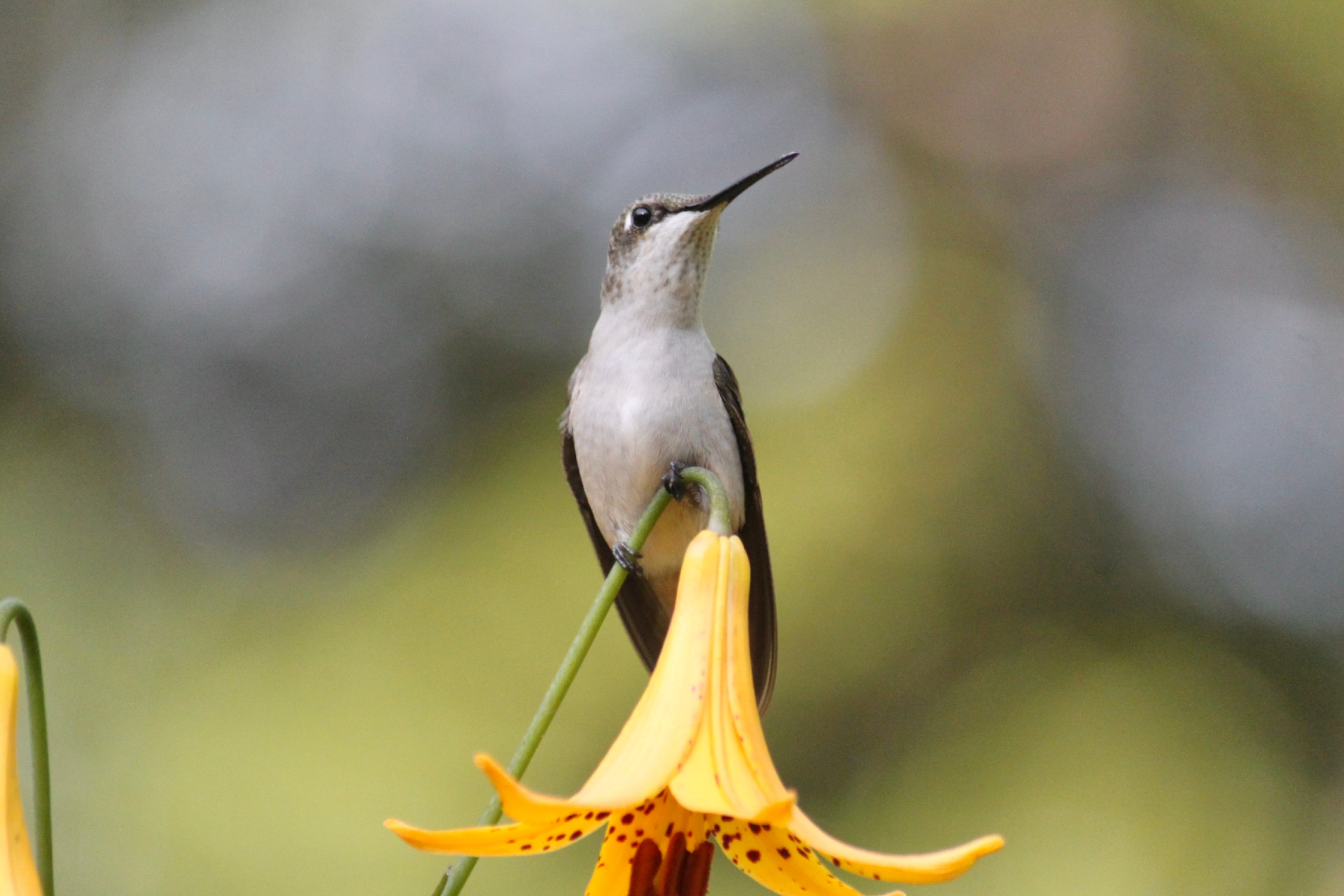

(Photos by Oleander M Photos)
When you think of a pollinator, you might not think of a bird species, but some birds are key pollinators. In Maine, the ruby-throated is the only common hummingbird, and they are the primary pollinators of Canada lilies. The hummingbird’s long beak and its incredible ability to hover in place enable these birds to extract nectar from the downward-facing trumpets of these flowers. Ruby-throated hummingbirds also feed on small insects and spiders. During breeding season, they range throughout eastern US and Canada and winter in Central America.
Reference: www.inaturalist.org/taxa/6432-Archilochus-colubris

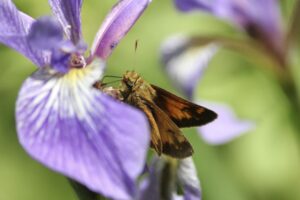
(Photos by Oleander M Photos)
The Hobomok skipper is a small butterfly found throughout much of northeastern and central United States and southern Canada. Butterflies such as these skippers use an elongated mouthpart called a proboscis, which acts almost like a built-in straw—to drink the nectar from flowers. Characterized by orange wings with sections of brown on males and a lighter brown with small white spots on females, the Hobomok skipper is one of many native skipper species in Maine.
Reference: www.inaturalist.org/taxa/1081323-Lon-hobomok
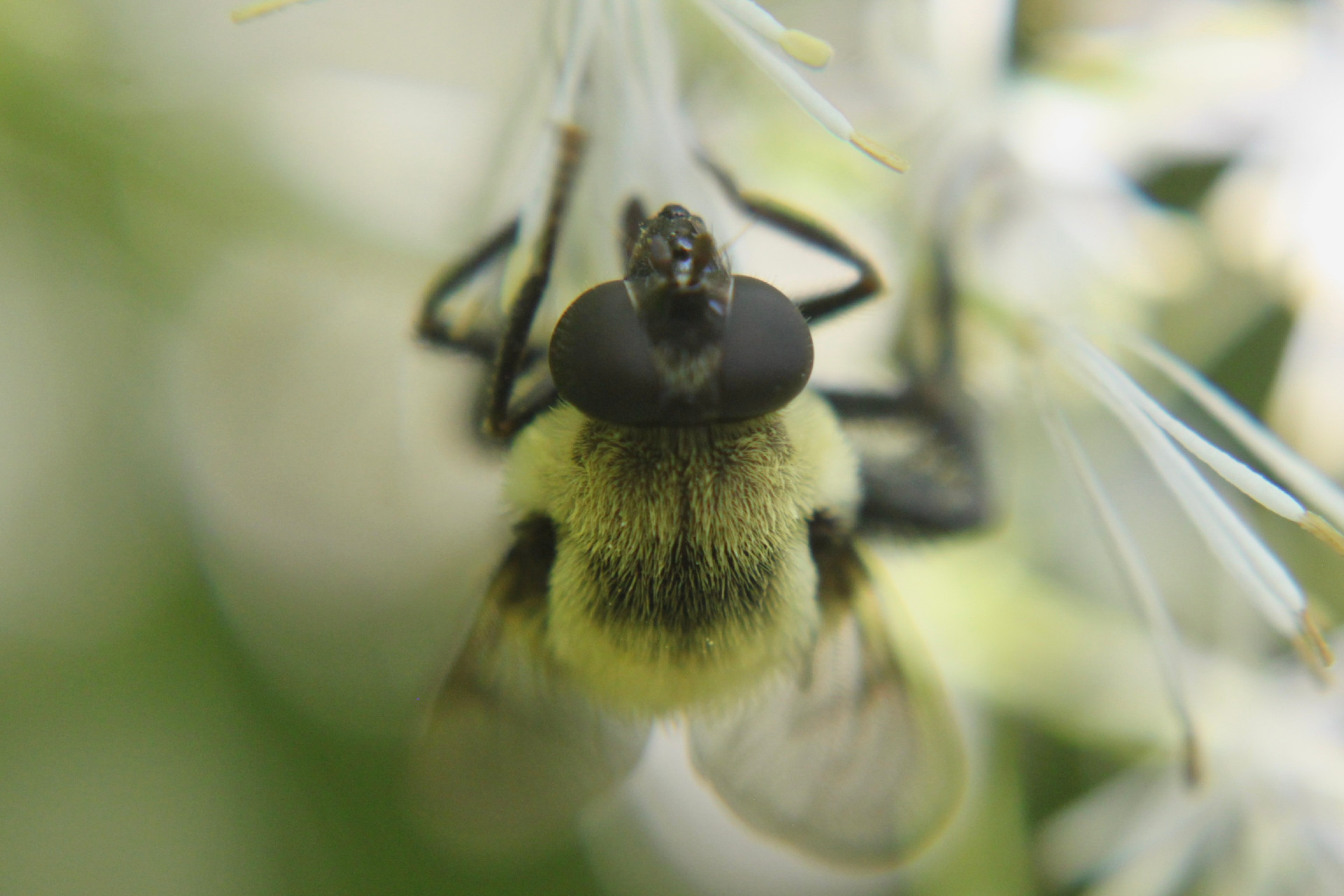
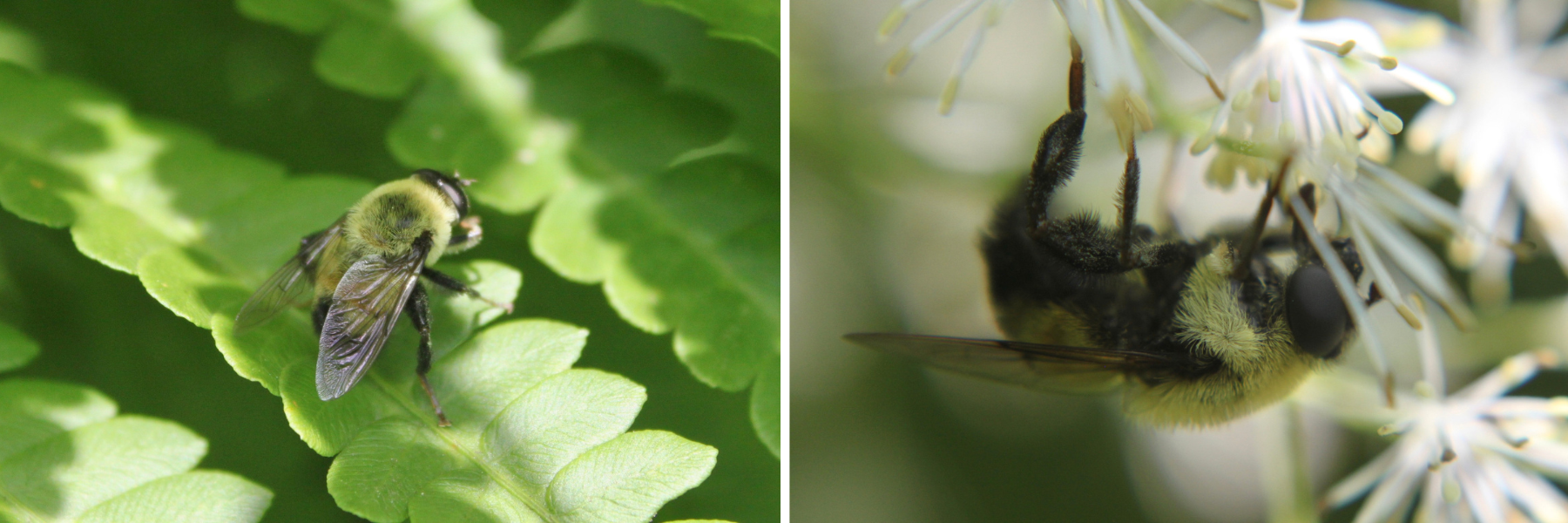
(Photos by Oleander M Photos)
This pollinator’s physical characteristics give it a similar look to bumblebees. Despite their appearance, these flies cannot bite or sting, but their merely looking like an insect that can sting keeps predators away–a form of defense called Batesian mimicry. To distinguish between a real bumblebee and mimic flies like this, look at the head: Hairy-eyed mimic flies have very large compound eyes that wrap around the top of their head and allows them to see in nearly every direction. Bees, on the other hand, have comparatively smaller eyes located on the sides of their head. Flies also have two short antennae located close together at the center of the head below their eyes, while bumblebees have two longer antennae that are further apart.
Reference: www.inaturalist.org/taxa/418601-Mallota-posticata
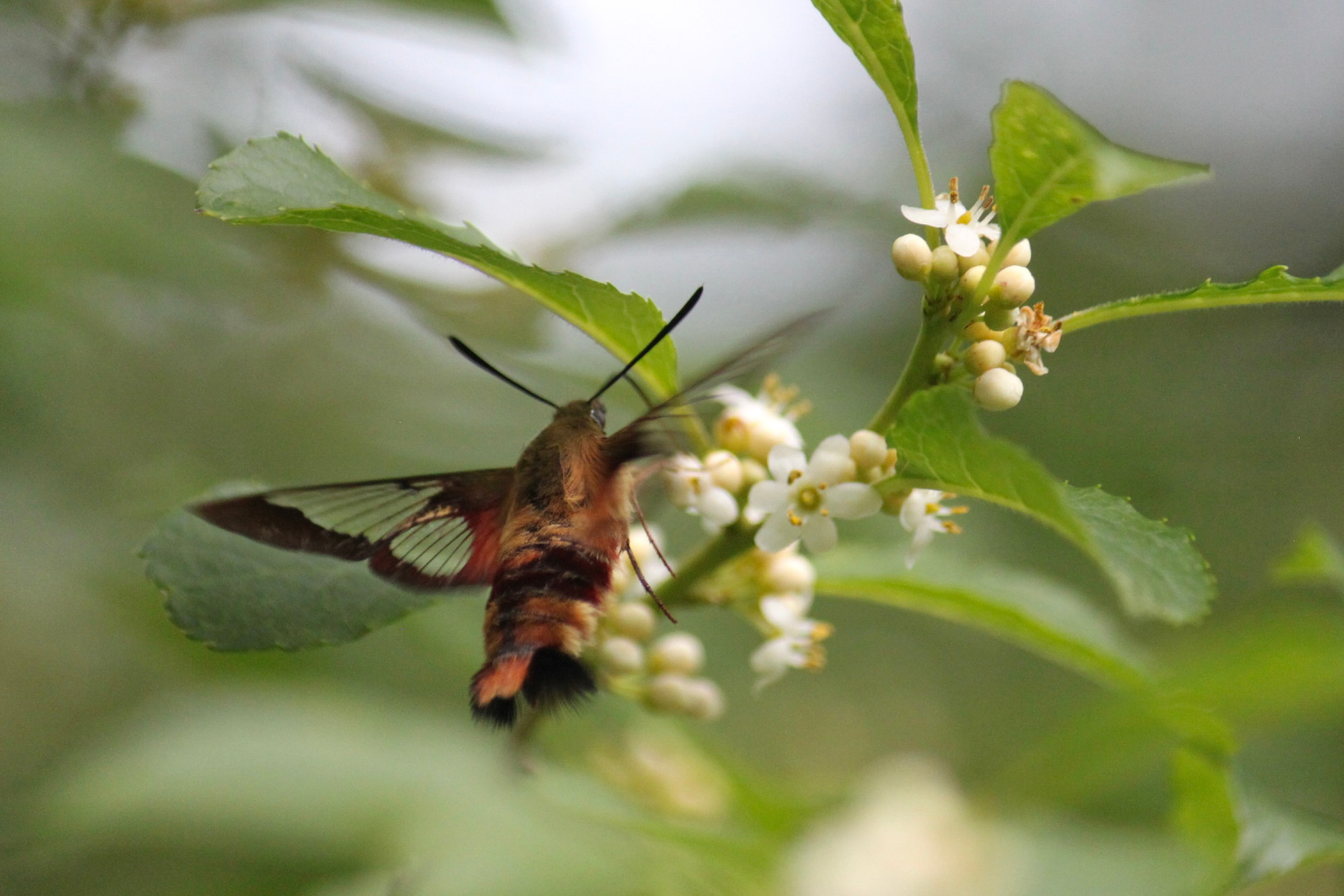
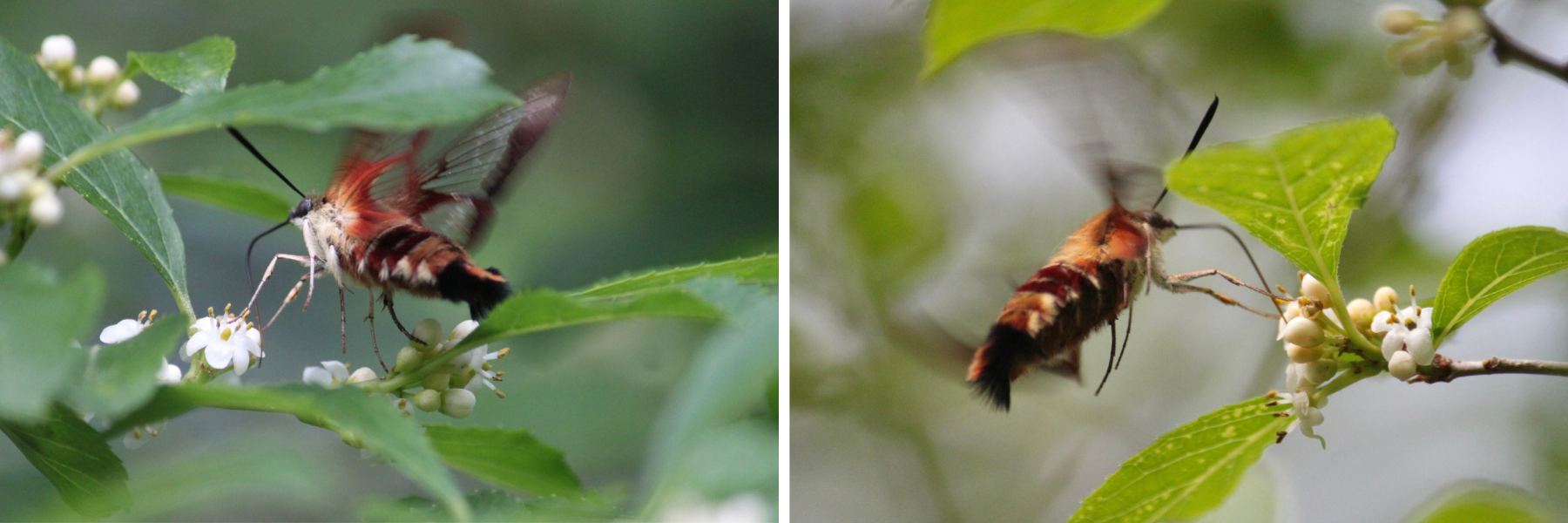
(Photos by Oleander M Photos)
Based on its appearance and name, the hummingbird clearwing may seem to be a hummingbird, but it is actually a moth. It not only looks like a hummingbird but also behaves very similarly— flying rapidly and hovering near flowers. Upon reaching adulthood, its wings are mostly transparent with red and brown borders.
Like many other insects, clearwings have a proboscis, a tubular mouthpart that allows them to drink nectar from flowers. Although they range across North America, they are most common in the eastern United States and parts of Canada.
Reference: www.inaturalist.org/taxa/82379-Hemaris-thysbe
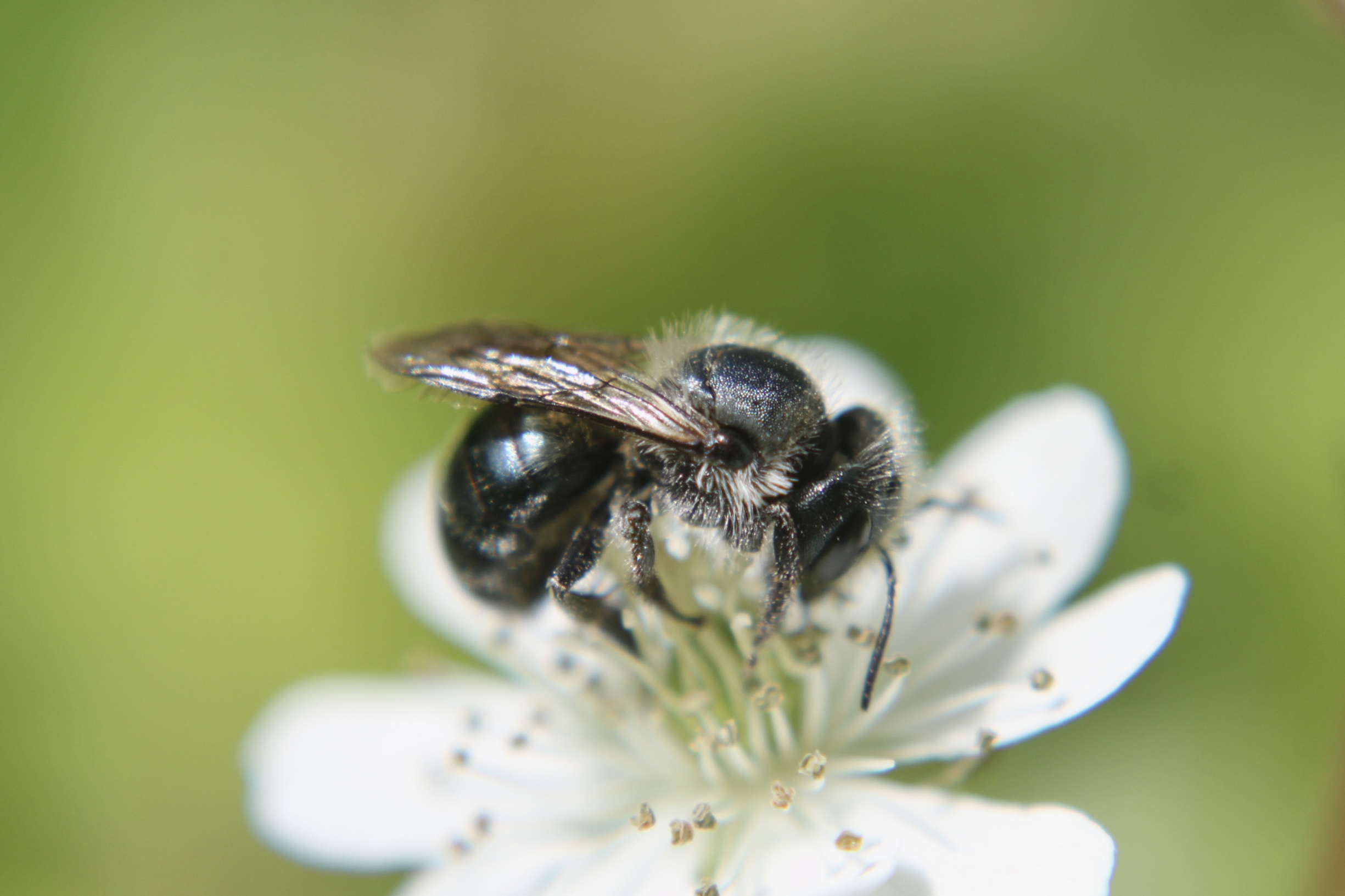

(Photos by Oleander M Photos)
With distinct metallic blue coloring, blue orchard bees are solitary bees that build nests in narrow tubes or crevices such as dried plant reeds. A female bee spends much of her time collecting pollen and nectar to line the nest; each egg is separated by a mud wall. Considered very docile, these bees are often kept by beekeepers and fruit farmers since this species prefers springtime fruit blossoms. They range across much of the United States but are separated by the Rocky Mountains—a separation that has led to the formation of two subspecies, Osmia lignaria lignaria, the eastern species, and Osmia lignaria propinqua, the western.
Reference: www.inaturalist.org/taxa/121507-Osmia-lignaria
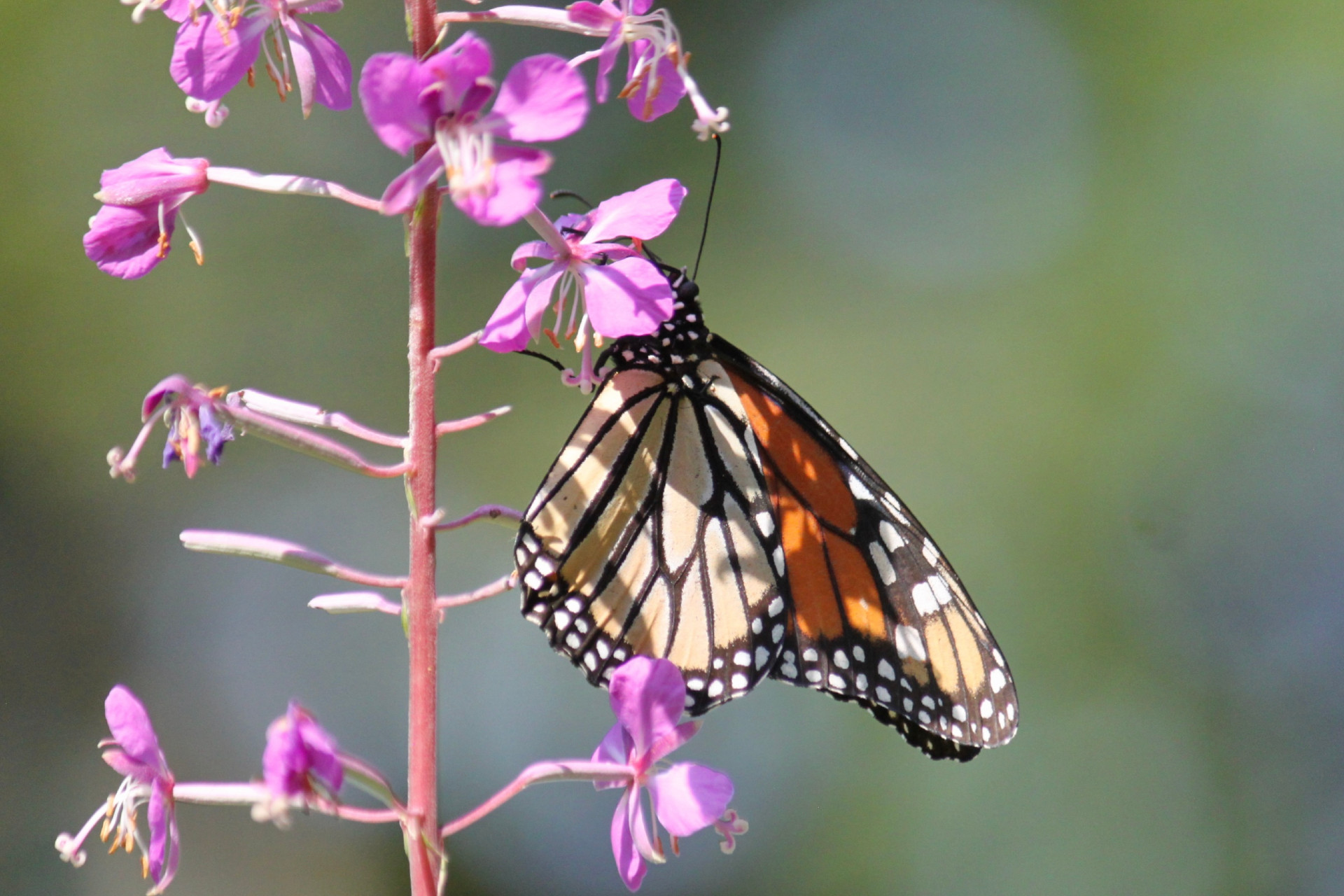
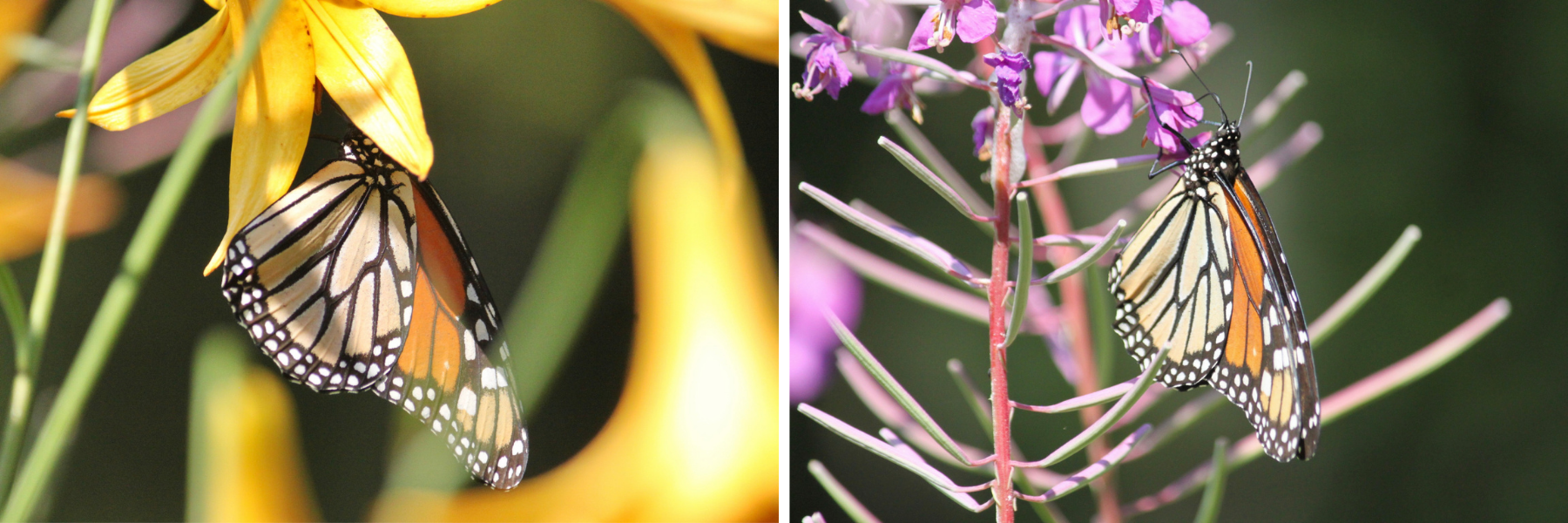
(Photos by Oleander M Photos)
One of the most recognizable pollinators, monarchs have bright orange wings with black borders and white spots. They migrate between the northern United States and Mexico where they winter, a journey completed by multiple generations of monarchs. As caterpillars, they are often found on milkweeds although some studies suggest that as adults they are not effective pollinators of these plants.
Reference: www.inaturalist.org/taxa/48662-Danaus-plexippus
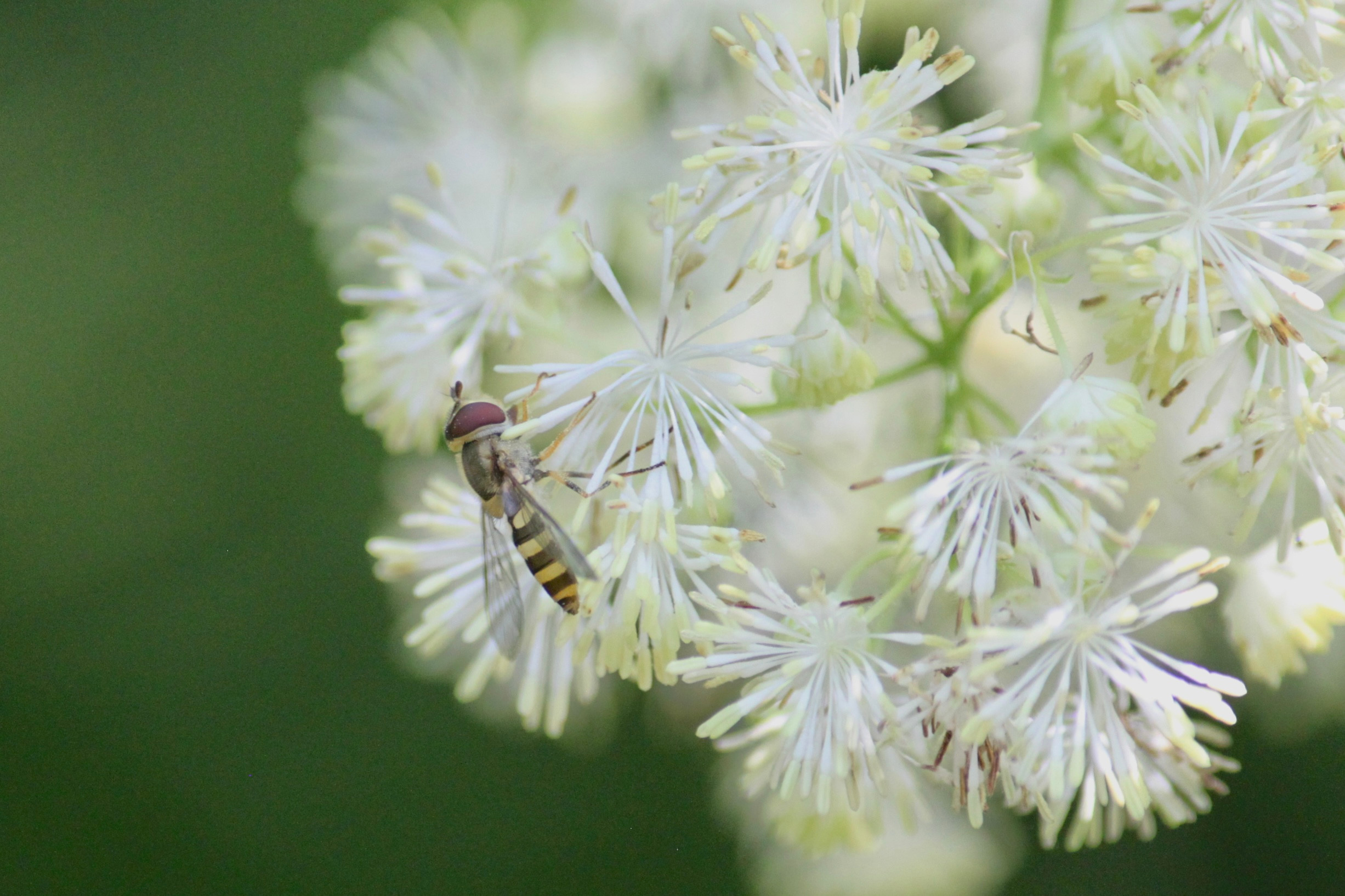
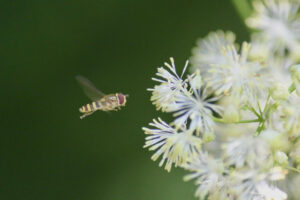
A species of hoverfly, the American thintail is a relatively small fly. The thick bands of black and yellow on their abdomen give them a similar appearance to hornets and bees. They have large red compound eyes, and the thorax, or mid-section, is usually a metallic gold or bronze color. They range across most of the Northern Hemisphere.
Reference: www.inaturalist.org/taxa/342901-Meliscaeva-cinctella
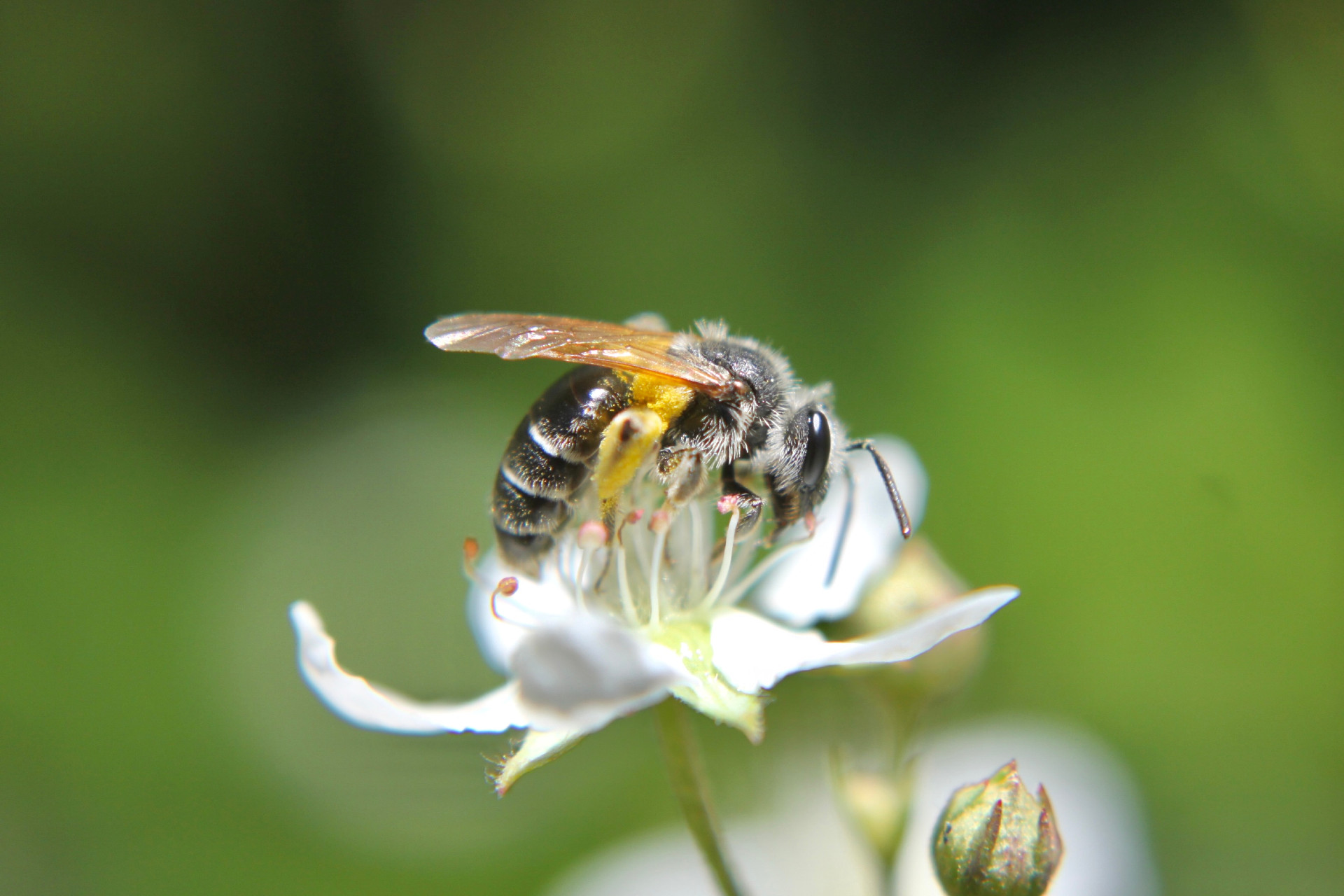
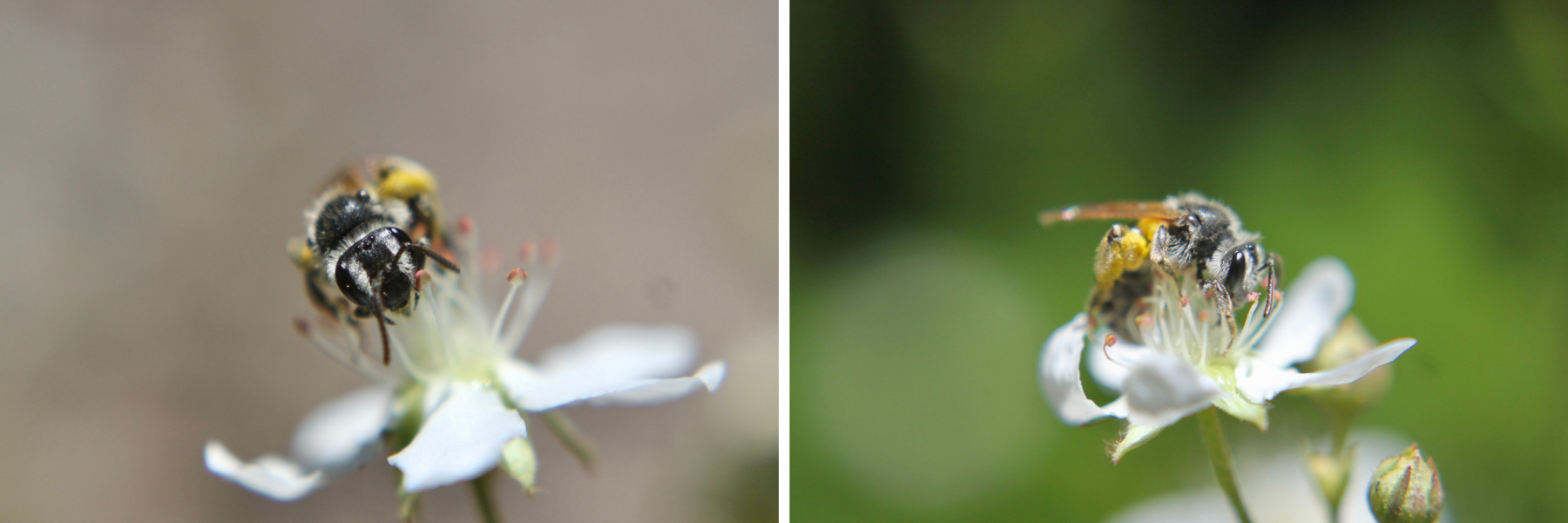
(Photos by Oleander M Photos)
The ligated furrow bee, a type of sweat bee, nests underground by burrowing tunnels and lives in a hierarchical colony. They range across most of the United States and Mexico. Between the many native sweat bees and mining bees, it can be difficult to identify a specific species. The black and white bands on its thick abdomen and the gray hair on the body and legs suggest that this is a ligated furrow bee, although other look-alikes, including the Wilke’s mining bee, exist.
Reference: www.inaturalist.org/taxa/154298-Halictus-ligatus
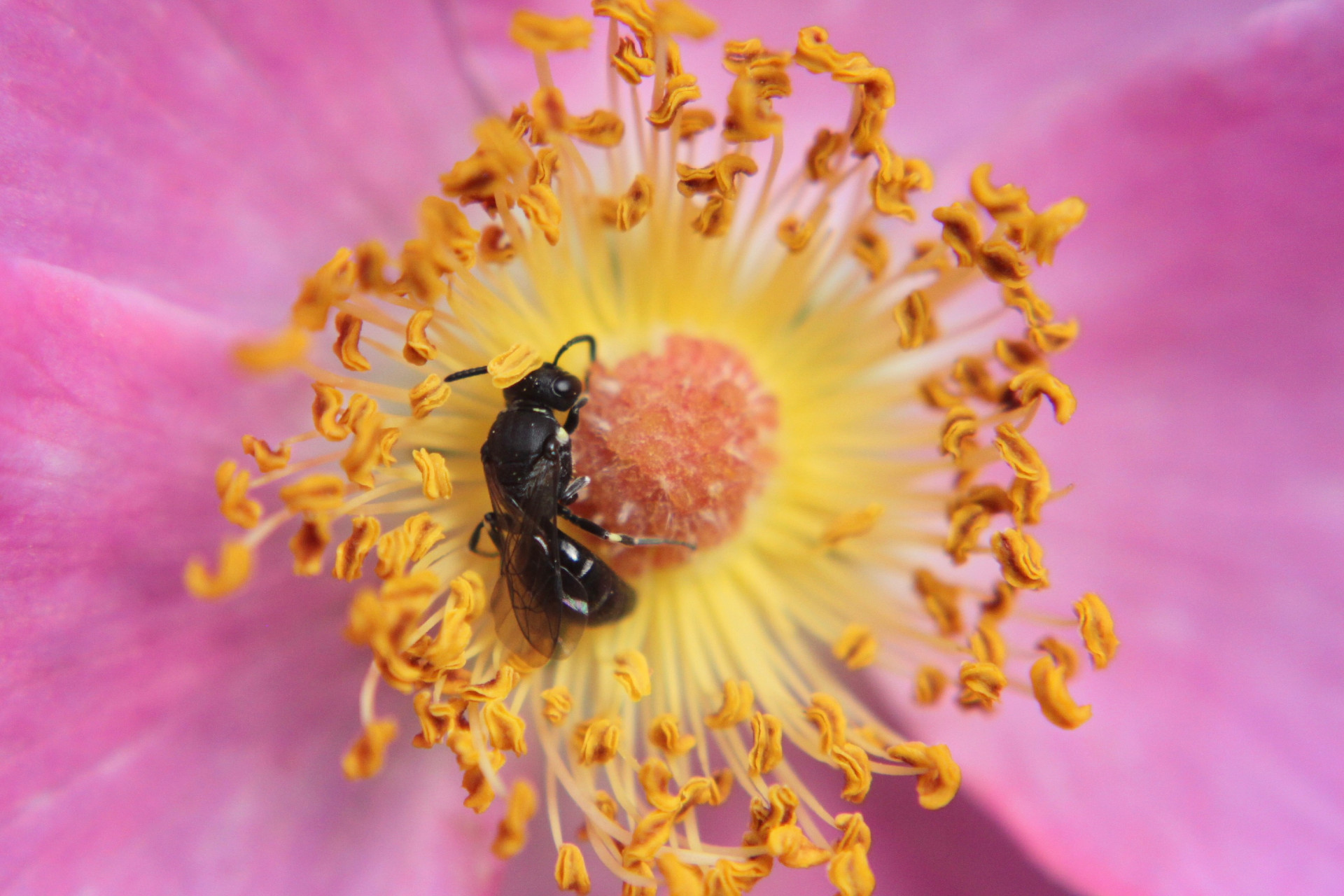
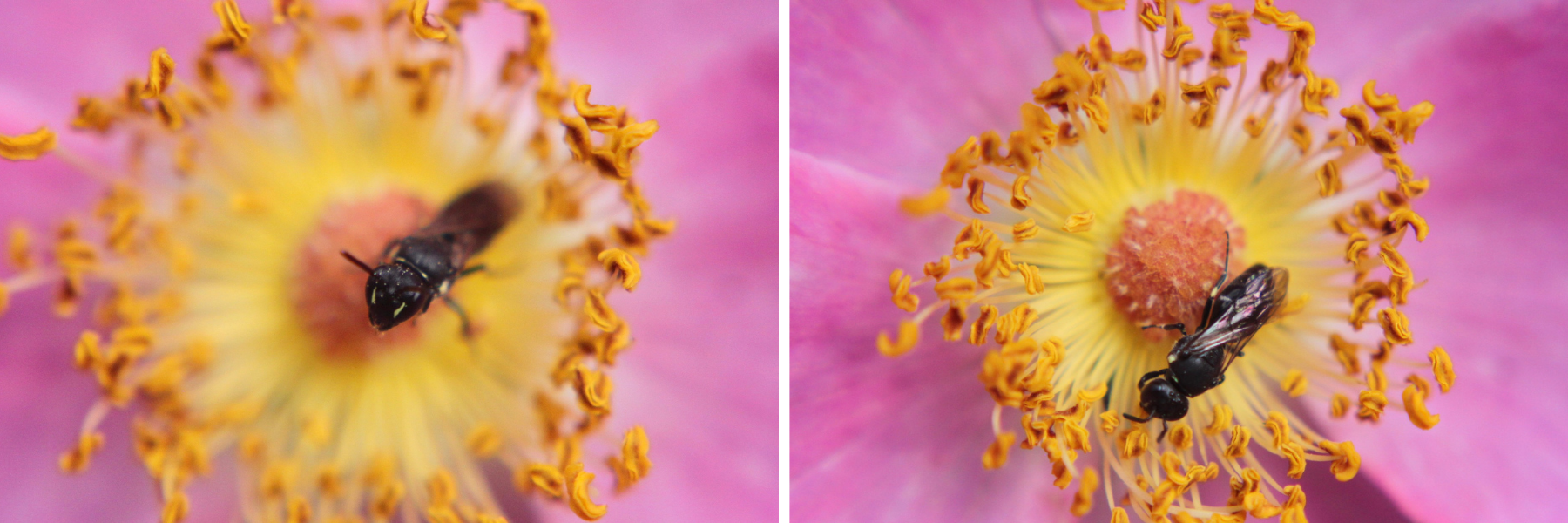
(Photos by Oleander M Photos)
Smaller than many other bees, the modest masked bee is characterized by a primarily black body with short yellow stripes on its face, upper thorax, and legs. The shade of yellow varies between individuals and sometimes appears to be white rather than yellow. For most masked bee species, the common name refers to their colorful facial markings, which on this species are small or modestly sized. They range across much of the eastern United States and southeastern Canada.
Reference: www.inaturalist.org/taxa/199048-Hylaeus-modestus